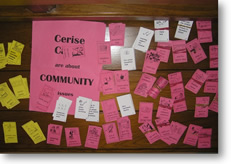Camden Blueprint: Bloomsbury Village Neighbourhood Plan
Bloomsbury Village Neighbourhood Plan
EventsSince our Localism seminar in March, we have facilitated three main events with Bloomsbury residents, local business and land owners. The very first event took place in July, a follow-up meeting promptly organised for September and a Planning for Real type exercise taking place in December. A summary of each event can be found below and the full-report downloaded from this website. Supporting papers for each meeting can be downloaded from the 'meetings page' |
5 December: Planning exercise at St Georges Church, BloomsburyAfter several months of planning, discussion and debate, Bloomsbury Village stakeholders met on the 5th December for a Planning for Real type exercise at St George's church in Bloomsbury. The event was well attended with around 35 local stakeholders participating in the exercise. Similar to the first event we facilitated back in July and drawing on the work that has taken place since, this event aimed to empower the local community to put forward and prioritise 'real' ideas on how to improve and develop the Bloomsbury Village area. How does it work?
What was the result?
Launch of StickyWorld and the Bloomsbury Village websiteBloomsbury Village Neighbourhood group have been working with StickyWorld, an interactive web-platform, to create an online viewing and discussion platform for the Bloomsbury Village Neighbourhood Plan. The website was launched at this event and projected onto a big screen so that stakeholders could see how it is possible to participate in the project and planning process for Bloomsbury Village interactively as well as through other communication methods e.g. meetings, working groups and mailing lists etc. The event also provided an opportunity to launch the Bloomsbury Village website, a website set-up by local stakeholders and dedicated to the promotion and continued planning and development of the Bloomsbury Village plan. All data from the event was then collected, transcribed and added to the StickyWorld website.
19 July: Bloomsbury Village Neighbourhood Planning EventThe first Bloomsbury Village planning event took place at St Georges Church, Bloomsbury. The aim of the event was to debate and define ‘the neighbourhood boundaries', agree the type of forum that could lead the planning process, and start to build a bank of local skills and resources. |
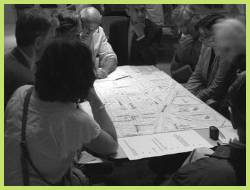 |
Approximately 40 people attended the event. This included local residents, some small business owners, representation from InMidtown BID/Terry Farrell Architects, involvement from Camden planning officers, and an observer from the Princes Foundation. |
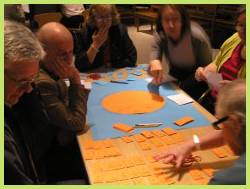 |
A brief event outline and our conclusions and recommendations can be found on this page.
- download: Invitation to Bloomsbury residents and businesses
- download: About neighbourhood planning (factsheet)
- download: Event report
Workshops
|
Workshop 1: Defining neighbourhood boundaries The Bloomsbury Association had provided a map with a suggested boundary as a starting point for discussion. Sections of the boundary were presented as questions for the exercise.
Workshop 2: Building a neighbourhood forum Participants in this activity were asked to choose 21 cards representing neighbourhood stakeholders and another 6 cards to represent advisers and co-optees the forum and planning process might need. Blank cards were available for people to include additional or different stakeholders and advisers. |
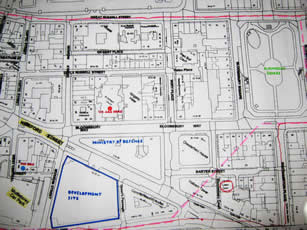 |
Setting up a bank of resources People were asked to fill in postcards with offers of things they can do to help (e.g. spreading the word, having good ideas, providing meeting space or catering etc) and deposit them in the bank.
|
 |
Recommendations:
Neighbourhood boundaries: North: Great Russell Street South: High Holborn West: Bloomsbury Street East: Southampton Row, Vernon Place, Southampton Place With option for phased planning with residential village as phase 1. |
Neighbourhood forum places: 11 residents; 1 local councillor (can rotate); 2 small business; 1 InMidtown BID; 1 major landowner; 1 community safety; 1 British Museum; 1 Bloomsbury Association; 1 friends of Bloomsbury Square; 1 Covent Garden Community Association; 1 St Georges Church.
Total 22. |
Lessons learned for the Camden Blueprint: |
Next Steps: |
The lessons learned from this exercise are listed below. Further details are listed in the full report which is available for download.
|
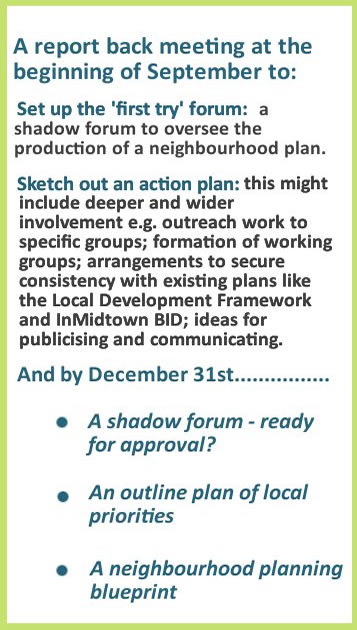 |
Planning and Development contextThe Bloomsbury Village Neighbourhood Plan will need to fit in with a number of approved planning and development policies set out in the Camden Local Development Framework November 2010. These policies and more, can be inspected online at: http://camden.gov.uk/ldf. You can also download a table summarising the LDF Core Strategy policies and Development Policies (DP). Background information about the Local Development Framework, Site Allocation and Placeshaping can be found on our 'Neighbourhood Planning' page. The following picture is an extract from the South Camden Proposals map 2010 which has been edited to include the boundary of the Bloomsbury Village Neighbourhood. |
.jpg) |
Sitting either in or near the Bloomsbury Village boundaries are the proposed development sites in Tottenham Court Road and Holborn. These Growth Areas are based on the Opportunity Areas designated in the Mayor's London Plan, but the boundaries have been set by the LDF Proposals Map.
The LDF indicates that these areas are suitable for large scale redevelopment or significant increases in jobs and homes, and are based around transport interchanges where increased capacity is planned. The Growth Areas will take advantage of the new transport capacity created by Crossrail and the Crossrail stations at Tottenham Court Road and Farringdon. Policies for the Growth Areas are set out in Section 1 of the LDF Core Strategy . |
As you can see on this extract, virtually the whole of the proposed Neighbourhood is covered by the Bloomsbury Conservation Area. There are policies in the LDF to preserve and enhance Conservation Areas.
Place-Shaping
In addition to LDF documents, the Council also produce Place Plans to help guide the development of each area. The Council has identified St Giles Holborn as one of nine placeshaping areas which will have their own Place Plans. Placeshaping:- Shaping the future of the St Giles to Holborn area (Sept 2011) is a draft document produced by the Place Plan and Investment team in Camden's Placeshaping service.
The document seeks to engage local and other interests on a number of key issues . Critically, it seeks to identify the range and complexity of local issues and priorities which need to be heard and understood in a vision for the area that reflects the interests of those who live as well as work and visit the area. With strong community organisations active in the area as well as the successful BID, there are good partners to work with on this mission.
Under these circumstances the Community Forum in Bloomsbury may consider setting up a Planning and Development Working Group.
You can find out more about Placeshaping on the camden council website
Bloomsbury Village Census Statistics (2001)
By clicking on the link below you can view the population statistics from the 2001 Census for the Bloomsbury Village Neighbourhood Plan area. The statistics are based on the output areas shown in green on the map.
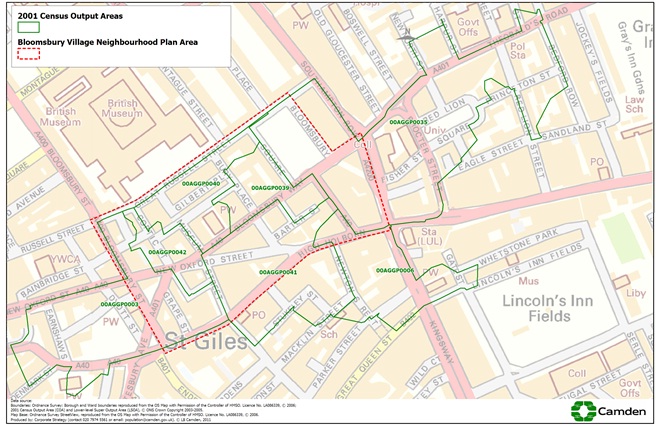
© Crown copyright material is reproduced with the permission of the Controller of HMSO and the Queen's Printer for Scotland.
This layout has been created by:
Corporate Strategy Strategy, Communications & Improvement
© LB Camden, 2011
Bloomsbury Village Interactive Project online!
The Bloomsbury Village Neighbourhood group have been working with StickyWorld, an interactive web-platform, to create an online viewing and discussion platform for the Bloomsbury Village Neighbourhood Plan. Users can view a map of the proposed boundary, zoom in to view at street level and add sticky notes to make a comment or ask questions about the plan. Its really simple to use so go ahead and take a look!

